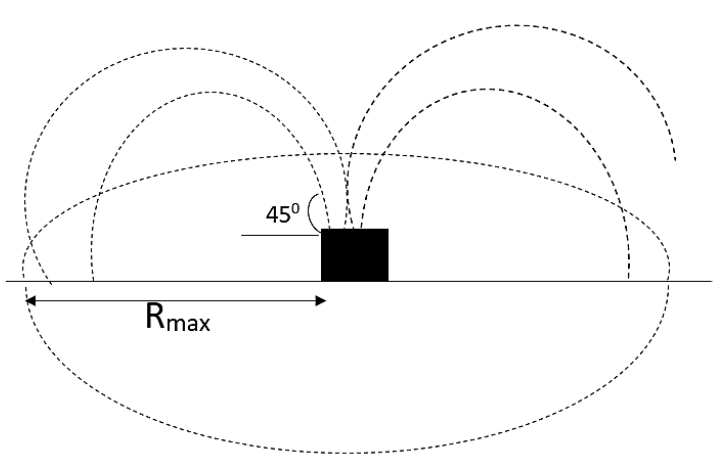Question
Question: A water fountain on the ground is sprinkling water all around it. If the speed at which water is flo...
A water fountain on the ground is sprinkling water all around it. If the speed at which water is flowing out from the fountain isv, then the total area around the fountain that will get wet is:
A.πgv2B.πg2v4C.2g2πv4D.πg2v2
Solution
The motion of water droplets from the water fountain will be a projectile motion. Therefore use the equations regarding the projectile motion in this question. Here the range should be calculated in order to calculate the total area around the fountain which gets wet.
Complete step by step answer:
Projectile motion is a kind of motion which is to be experienced by a body or a particle that is being projected near the Earth's surface and is moving along a curved path due to the action of gravity only.

Here the area around the water fountain which will get wet is the area of a circle which has been drawn as the radius is being the maximum range of the particle.
Therefore we can write that, the radius,
r=Rmax
Where Rmaxthe maximum range of the projectile.
As we know the maximum range of projectile is given as,
Rmax=gv2sin2θ
For maximum value of R-
θ=45∘2θ=90∘sin2θ=1
Therefore
Rmax=gv2
As
So the equation of area will be,
A=πR2max
Substituting Rmax in this equation will give,
A=π(gv2)2A=g2πv4
So, the correct answer is “Option B”.
Note: The trajectory of motion was discovered by Galileo to be a parabola, but sometimes can also be a line in the special case when it is thrown upwards directly. A projectile is a material upon which the only force acting is gravity. Gravity is acting in order to influence the vertical motion of the projectile. This may result in a vertical acceleration. The horizontal motion of the projectile is the result of the tendency of the body in motion in order to stay in motion with a constant velocity.
